-
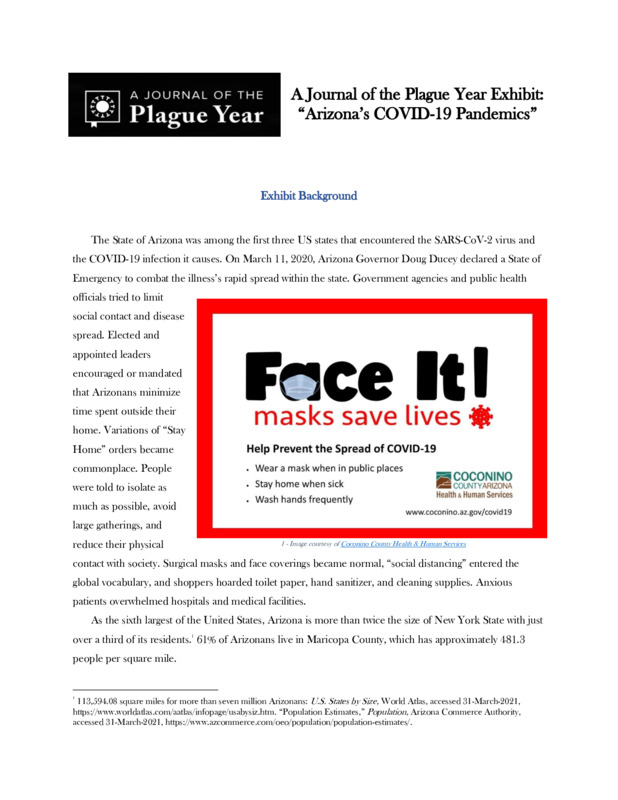
2021-04-20
While working as a curatorial intern on ASU's 'A Journal of the Plague Year' COVID-19 archive, I created this exhibit on the pandemic experience within the state.
In addition to obvious, overarching realities such as socioeconomic status and immediate access to healthcare systems, I initially believed one of the greatest deciding factors that determined one's experience in Arizona was an individual's residence in either predominantly urban or rural environments. The proposed exhibit had been originally titled "A Tale of Two Arizonas" to pay respect to Charles Dickens and the differing realities experienced here.
To test my proposed hypothesis, I went about finding data, stories, and submissions that substantiated or disputed my premise. Within a short time, I had identified four distinct environmental drivers of personal pandemic experiences; to me, that indicated the existence of many more I hadn't yet found or had overlooked along the way. My evidence suggested a minimum of four pandemic locales: Urban, Rural, Border, and Tribal within the State of Arizona and its fifteen counties. The recorded health data and personal experiences demonstrated the naivete of my initial hypothesis, and I retitled the exhibit: "Arizona's COVID-19 Pandemics."
The Exhibit Background section illustrates the vast dichotomies within Arizona in terms of population density and access to healthcare facilities. Given the virus's respiratory nature, these factors seemed especially relevant to driving diverse local experiences. I chose to include a flyer from the Coconino County Health and Human Services' "Face It! Masks Save Lives" campaign. The flyer included a specific line to "Stay Home When Sick" that seemed to illustrate a different public health paradigm than the broader "stay home" orders from Maricopa and Pima county. This section also features an image of Sedona's red rocks and a portion of The Wave to remind visitors of the wide-open rural areas accessible to all, as well as those with cultural significance to the Native American tribes and limited access to the general public.
The next section asks a short, five-question survey in which visitors may participate.
The Silver Linings piece features a short audio clip of a father and husband discussing some unexpected benefits of the pandemic. Visitors may explore additional Silver Linings stories and submit their own experience.
The Tséhootsooí Medical Center piece seeks to illustrate the different pandemic experience on the state's tribal lands. I hoped to inspire some relevant emotional turmoil for the visitors through the piece's visual presentation. I wanted to create a series of waves with quotes from the medical center's healthcare workers. I hoped visitors' attention would be drawn to the large, bolded key words, and that they would first experience the segments out of sequence because of that. After potentially feeling a sense of chaos, they might settle themselves into a deliberate reading of the texts and find their own order within the experiences provided here. This piece allows further exploration of Native submissions and topics, a review of an additional related news article, and a submission prompt that invites visitors to offer guidance to hospital managers.
The next piece illustrates the differences between mask mandates in communities across Arizona. In addition to hearing an audio clip of interviews with mayors and a public health official, visitors can explore additional submissions related to mask mandates and submit their thoughts on statewide mandates.
The Arizona Department of Health Services provides zip-code specific infection data on its website, and the wide array of known case infections therein further illustrates potential dichotomies across the state. In working to include and represent this data in a consumable way, I encountered inconsistencies with tribal data. The nation's Indian tribes are overseen by Indian Health Services, a federal public health agency, and it does not collect or report data in the same manner as the State of Arizona or its counties. At first glance, the data would seem to suggest that tribal areas had less severe pandemic experiences than the rural and urban areas, which was not objectively true. I wanted to offer the unedited data to visitors, allow them to drawn their own conclusions, and invite them to offer their thoughts on what potential misunderstandings might emanate from these reporting differences. Visitors may also choose to review the foundational data from this piece, as well.
I used the following two sections to offer submission prompts about the visitor's overall pandemic experience as a function of their location, as well as what they might have done if placed in charge of their city, county, or state during this pandemic.
A diverse Search section allows visitors to explore additional topics of interest to them. 23 hyperlinks offer pre-defined search parameters. An Advanced Search link allows self-defined research, and a Join The Staff link connects visitors with opportunities to work within the JOTPY archive.
A final section asks visitors to provide feedback on the exhibit, its content, and the pandemic in general.
Both surveys within the exhibit will display overall results to visitors who participate in them.
Through this process, I found incredible amounts and diversity of data outside the archive that spoke to these generally localized experiences, but not that much yet within the archive explained what Arizonans had experienced outside the state's urban environments. I created a call for submissions and delivered it to fifty rural entities that might help support the effort to collect and preserve more rural Arizona stories. Between all the local libraries, historical societies, museums, small-town mayors, and county health officials to whom I asked for help, I am optimistic the archive will better represent all Arizonans in the coming months and years. Despite the exhibit having been created, I ensured its internal search features would include future submissions and allow the exhibit to remain relevant long after its release.
-
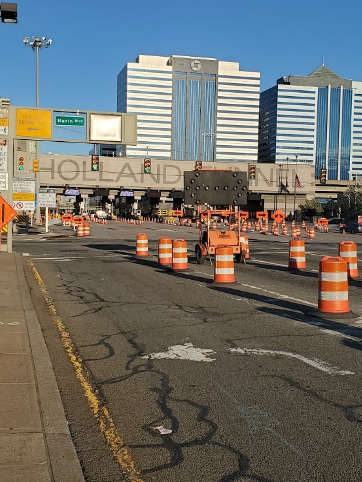
2020-04-08T18:22
My life has been greatly interrupted by the Covid-19. As of March 12th, 2020, everything around me came to a screeching halt and it was the last time I drove my car into Manhattan. New York and New Jersey began working in partnership during the Corona pandemic, Governor Phil Murphy and Governor Andrew Cuomo closed the states to prevent the spread of the Corona Virus. They both did a marvelous job in managing the spread of the virus and kept the public well informed. The Port Authority of New York and New Jersey is run by the Government with an office in Weehawken, New Jersey. They keep the region moving by, land, rail, and sea. Critical healthcare workers, first responders, and other essential workers were the pulse of cities, keeping the communities alive and functioning.
As of March 22nd, the Port Authority began collecting tolls exclusively by electronic and suspended cash toll collection between the states at the George Washington Bridge, Lincoln Tunnel and Holland Tunnel due to the safety and social distancing.
I live in the Newport Waterfront Development, a bedroom town just across the Hudson river, I am steps away from the Holland Tunnel. The tunnel was built in 1921 and it is a vehicular tunnel under the Hudson River, and it connects Lower Manhattan in New York City to the east with Jersey City in New Jersey to the west. Normally over 100,000 vehicles pass through the Holland Tunnel daily. I was incredibly happy about the many reports concerning the air quality change and pollution were way down. With all health clubs and gyms closed, I began daily walks and it struck me that there were very few cars traveling into lower Manhattan during rush hour. What a sight to see, Wednesday, April 8, 2020 at 6:22 PM
-
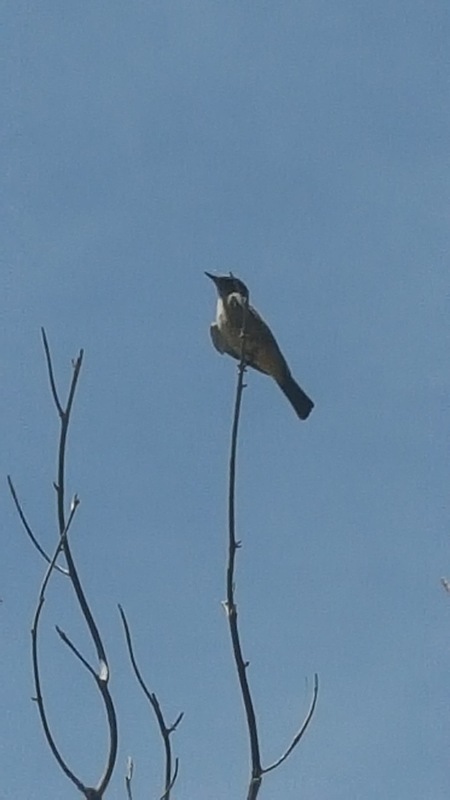
2020-08-05
During quarantine, it's easy to feel bored and lonely. I took many drives during this time to help ease the pain. I submitted these particular photos because they connect to my experience in quarantine.
-
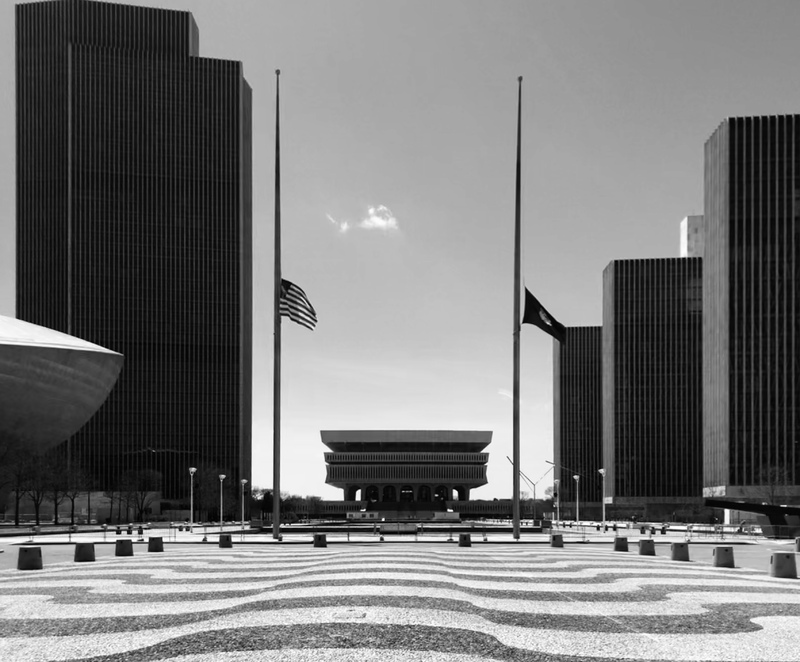
2020-04-19
The U.S. and New York State flags flying at half-mast in at the Empire State Plaza in Downtown Albany, NY in late April, after Governor Andrew Cuomo ordered all flags to be flown at half-mast in honor of all who have died from COVID-19. The New York State Museum is seen straight ahead centered between the two flags.
-
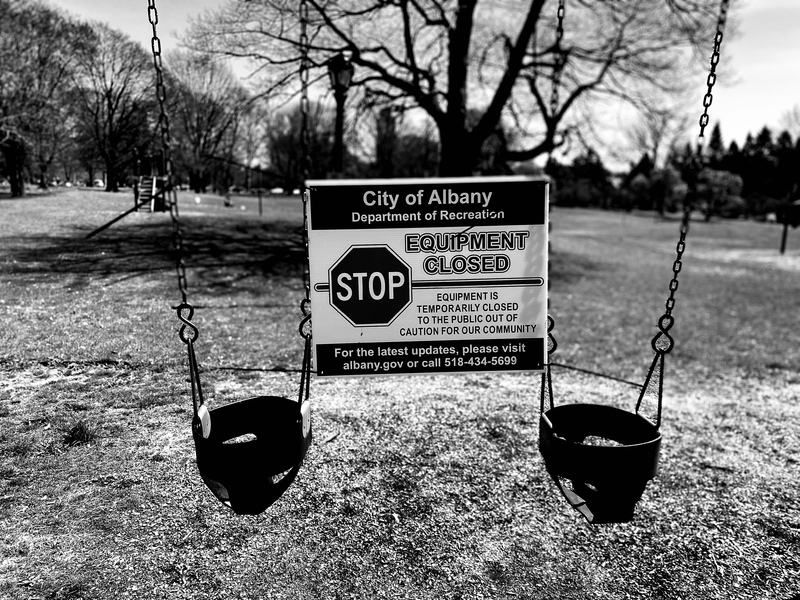
2020-04-19
Taken at Washington Park in Albany, NY in late April. The sign notes that these swings are closed and cannot be used due to COVID-19. All other playgrounds and equipment in the park were closed and had similar signage.
-
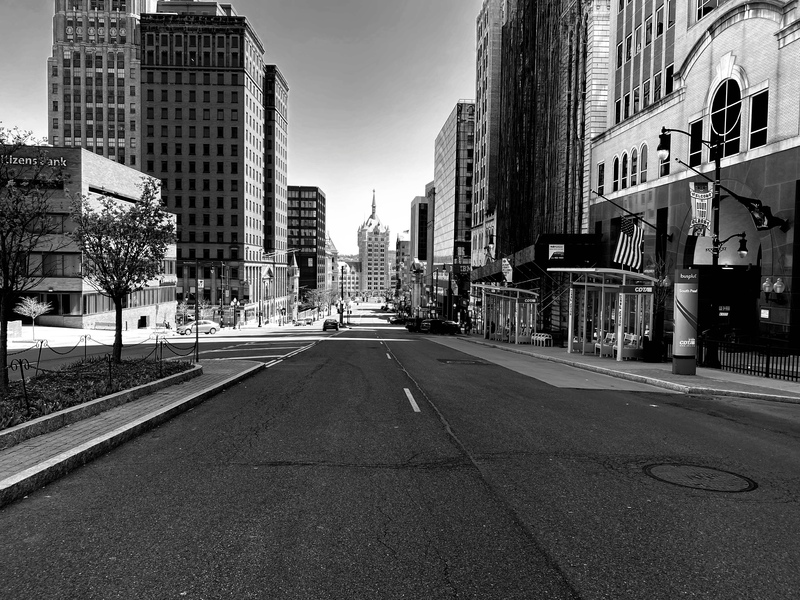
2020-04-19
Down an empty State Street in Downtown Albany, NY in late April. This photo was taken standing in the middle of the street, which normally would not be possible as this street is usually busy and packed with cars. The SUNY Central Administration building is seen straight ahead in the distance.
-
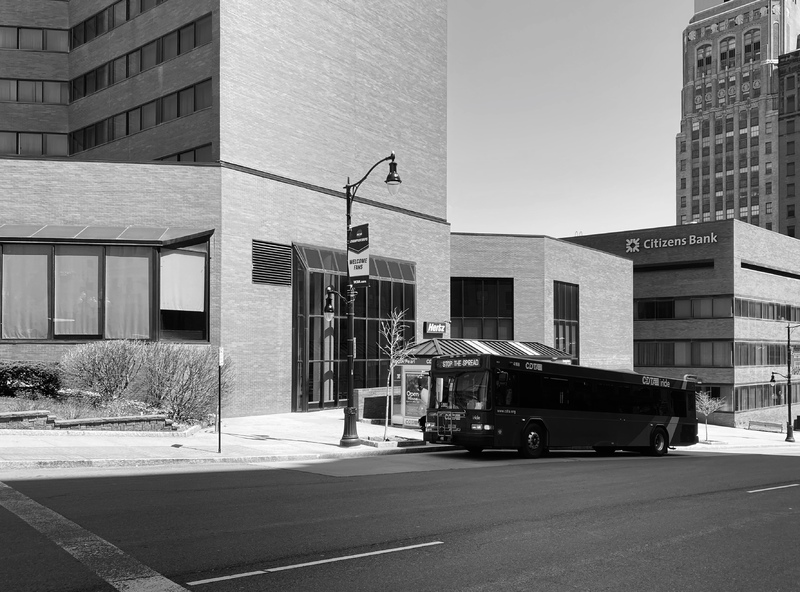
2020-04-19
A CDTA bus pulling up to a bus stop on State Street in Downtown Albany, NY in late April. All riders were required to wear masks, and there were barely any riders on the bus. Its electronic sign reads, “STOP THE SPREAD.”
-
2020-08-10
The month of April found me back in my parents home in a suburb of Albany, NY. My university was closed, and I was forced to move out of my on-campus housing a month earlier. All of my classes continues online, and my film photography class was required to move to a digital photography platform as we were not allowed access to our university’s darkroom to develop our film. I found myself wondering how to find subject matter amidst a global pandemic, where at the time grocery stores were just about the only places open, in what I considered to be the most boring small town in America. After weeks of submitting photo after photo of my backyard, house, dogs, and siblings, my professor asked me to try and find a new subject for my photos. I really had no idea what else to photograph, but on a trip to Target for groceries with my mother, I found myself wandering through row after row of bare, colorless shelves. I took a photo of this to send to my father, proving that there was not a roll of toilet paper to be had, but then thought about how interesting it could be to document the rows and rows of desolate shelves, leading me to a new subject for my photography class assignments: emptiness. I moved from documenting empty shelves, to empty parks, to empty streets. Emptiness was a subject I could find nearly everywhere I looked during the coronavirus pandemic. Looking back on these photos a few months later, I am so glad I was able to use an art form I love to document what life was like during this strange and scary time in our world. I hope that years from now, my photos could help someone have some idea of how empty our world truly felt during this time.
-
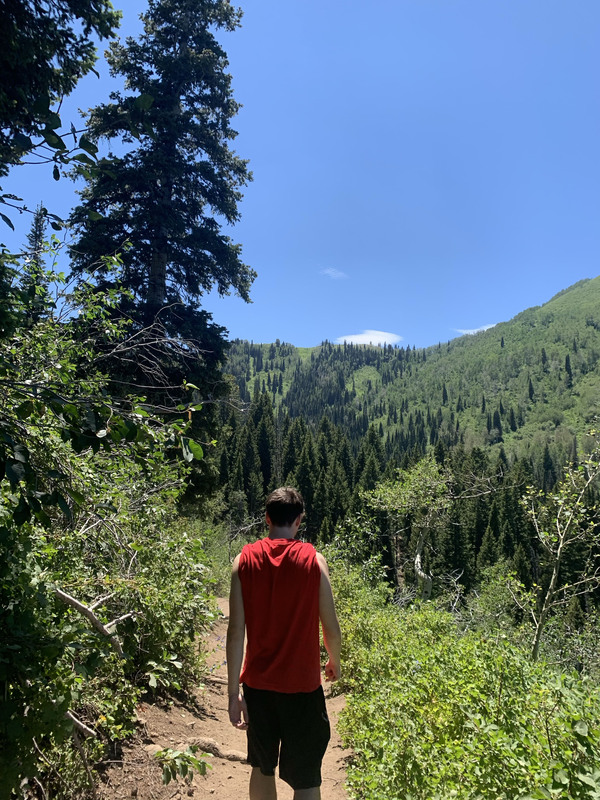
2020-07
I thought I would upload these photos to share how I found beauty this summer despite everything happening right now in the US. It serves as a reminder that although things are not normal and probably won't be for a long time, there is such immense beauty that exists in this world. If it weren't for COVID and losing my job I would not have experienced many of these moments that I captured in these pictures. Perhaps the silver lining of COVID is that for a lot of us, it has forced us to literally sit back and reflect and these photos illustrate the "COVID
-friendly" activities I chose to do this summer with all my free time. Some of these photos are some scenic landscapes in NYC, where I live. The rest of these images are from various scenic places throughout the country, mostly in the west, where I began my roadtrip back to NYC a few weeks ago.
-
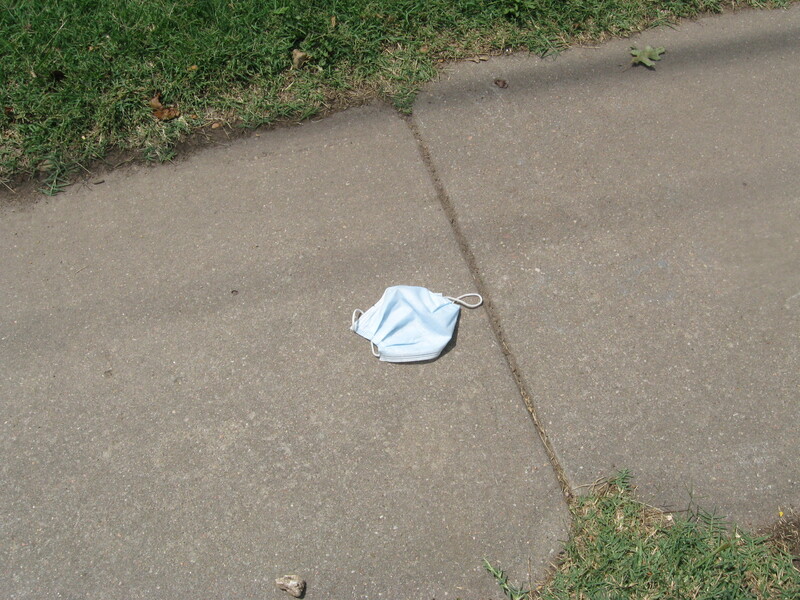
2020-07-06
Found on the sidewalk along west Wichita, Kansas's 13th Street, this discarded mask reflects two dueling realities that have come to define the larger COVID-19 experience. First, such a sight is now rather commonplace across many communities, thereby revealing that masks have become such an important mitigation measure and common clothing accessory in both the US and the world that they are found in use and disuse as easily as a soda can or food wrapper. It is also emblematic of the contrary attitudes still held by many people, especially in more conservative regions of the United States, with a still significant portion of the population who, in the face of surging cases and fatalities, continue to challenge the need for masks and distancing by carrying on as if COVID-19 were a relic of the past.
-
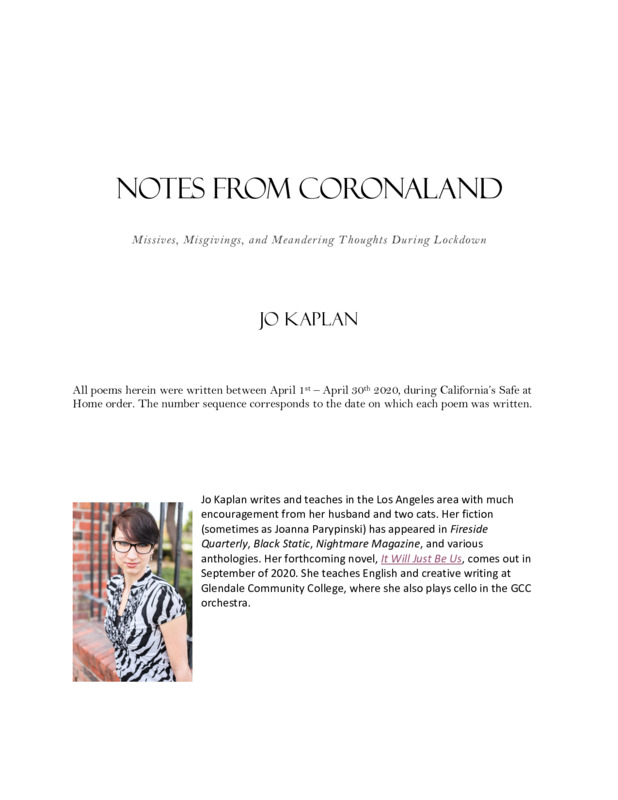
2020-04-30
My English professor, Jo Kaplan, pen name for Joanna Parypinski, wrote a lovely collection of poetry while in quarantine in April 2020. The poems are beautiful in their simplicity and accessibility. The language is sometimes surprising, but always profound and universal. I think they have captured the feelings of all of us during this difficult time.
-
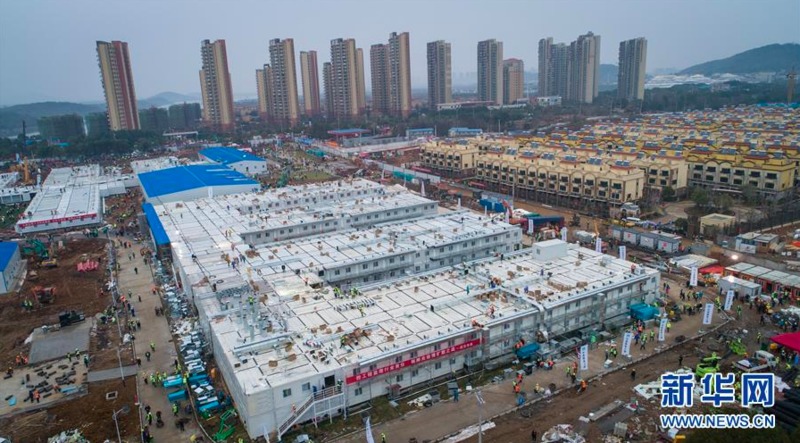
2020-02-02
Due to the high volume of the COVID-19 patients, the hospitals in Wuhan were all full. This hospital is built by the government in only 10 days which shocked the world. The hospital could hold more than 1500 patients.
-

2020-03-05
"Although there is 60 years of the age gap, we can still see the sunset hand in hand." On March 05, Wuhan University Renmin Hospital, an 87-year-old COVID-19 patient saw the sunset with a young doctor. Doctors devoted a lot during this pandemic, no matter how serious the patients are; and they never give up any lives. They are worthy of the Hippocratic Oath. They ought to be respected.
-
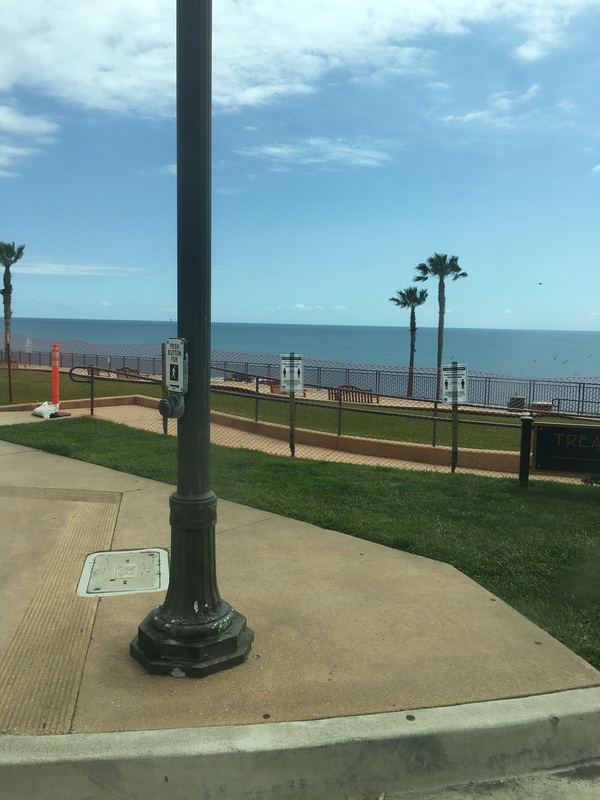
2020-04-18
My mom and I went out for a ride to just see the outside world. We drove to Laguna Beach, looking at all of the other cars that apparently had the same idea. The beaches were empty, lined with a plastic orange mesh fence and social distancing instructions “Stay 6 ft apart”. Sometimes it was eerie to see nobody else outside. The beach is a place my family likes to go to have fun, but like many of our other pastimes, we can’t do them anymore. We like to joke that eating is the only activity we can do during quarantine.
-
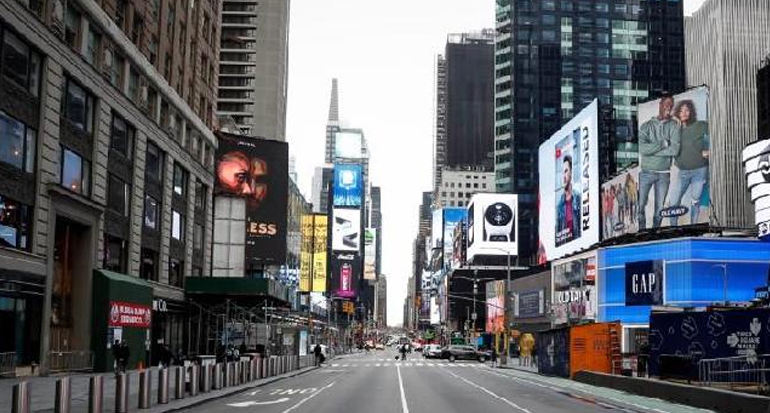
2020-04-04
When time and times square came to a standstill. Lockdown in new york. New york has been forced into lockdown joining california and other us states as americans are warned to prepare for the worst. Officials across the us. Andrew cuomo ordered nonessential businesses to keep 100 of their workforce at home in an effort to combat the spread of the covid 19 pandemic. Here is what lockdown looks like in various states as residents are urged to remain indoors.
-

Walking through Brooklyn Bridge Park I tried to stay as far away from other people as I could. This woman and I did a sort of dance; each avoiding each other. Finally we both ended up on the water
-
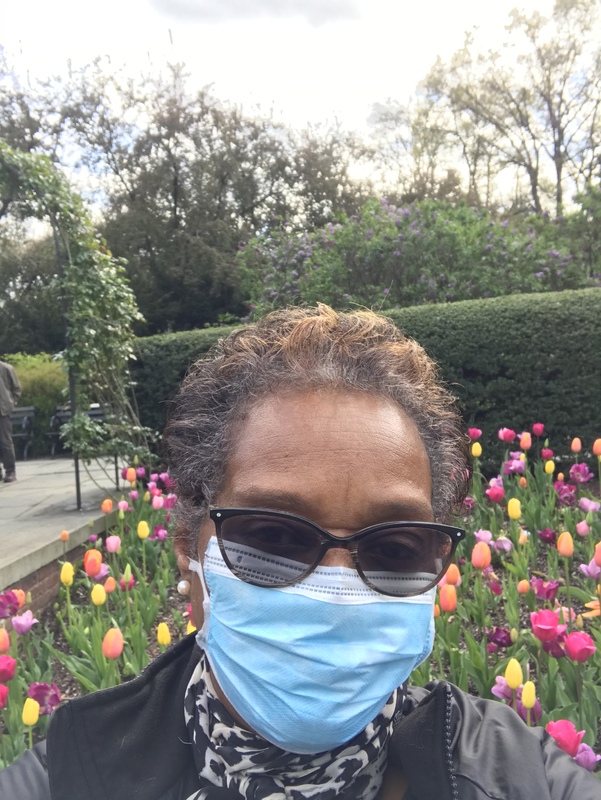
2020-04-25
This is a picture of me in the Central Park Conservancy Tori Gardens. Even in the mist of a pandemic the tulips in the garden are in their full glory. This was one of the first nice days and everyone was out seeking a piece of nature.
-
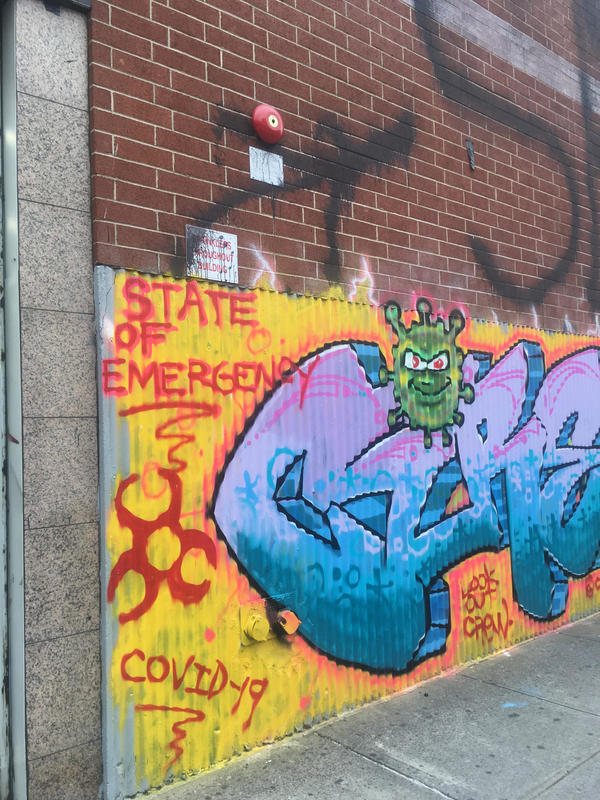
2020-03-19
Graffiti shows cartoon "germ" and says "State of Emergency" and COVID-19. This was right at the beginning of the quarantine and is located on the block around the corner from a popular grocery store in Bushwick, the first place I saw with an enforced socially-distanced line outside.
-
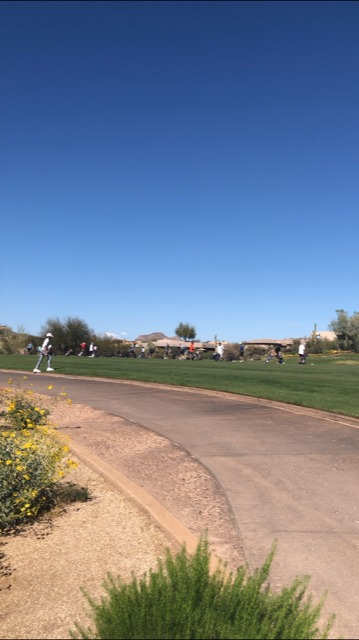
2020-04-05
I live in next to the Troon North Golf Course in North Scottsdale. At the begging of April, when we were first told to stay home, I realized that everyday there were hundreds of people golfing. This definitely didn't look like social distancing to me!
-
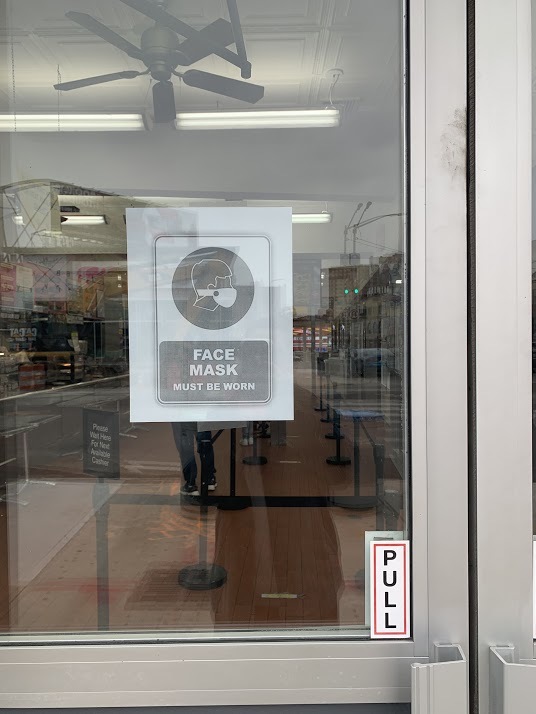
2020-04-17
Sign informing customers they must wear a face mask posted outside Nathan's Famous in Coney Island, Brooklyn.
-
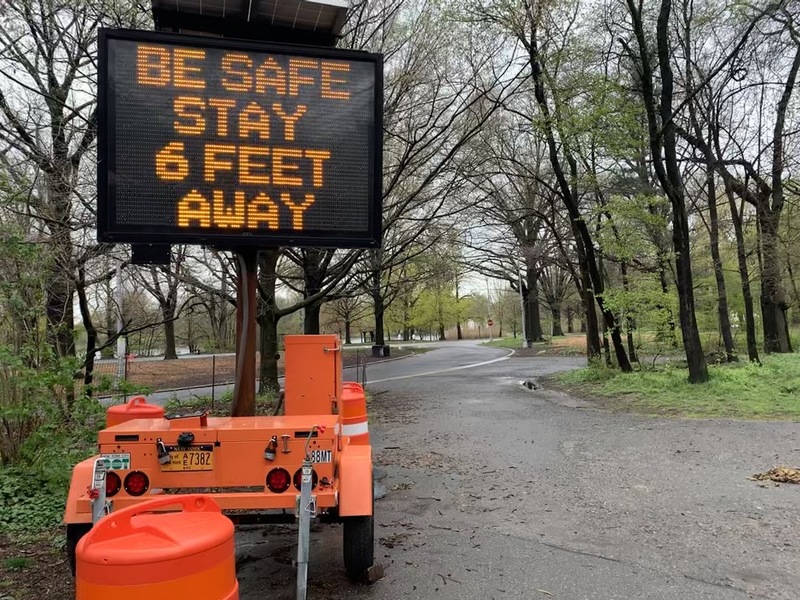
2020-04-24
Electronic sign in Prospect Park, Brooklyn.
-
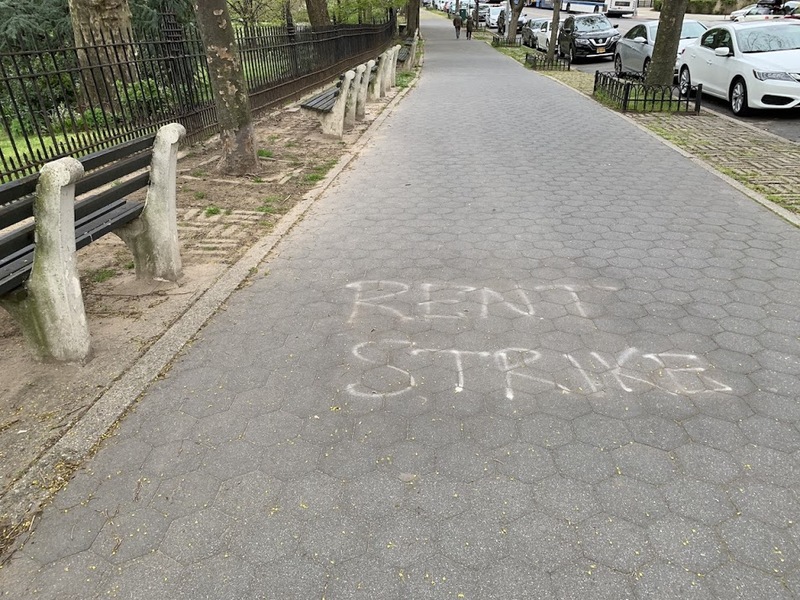
2020-04-29
Chalk writing found on Shore Road in Bay Ridge, Brooklyn.
-
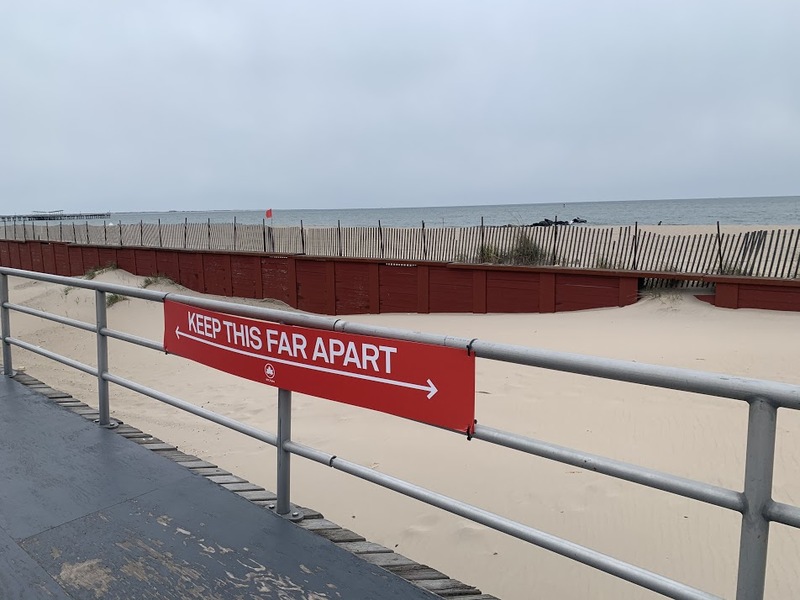
2020-04-17
Walking along the boardwalk in Coney Island, a sign reminding the public how far apart they should stand appears.
-

2020-04-29
Many residents in Brooklyn have posted signs outside their homes relating to the pandemic. This sign was found while walking around in Dyker Heights, Brooklyn.
-
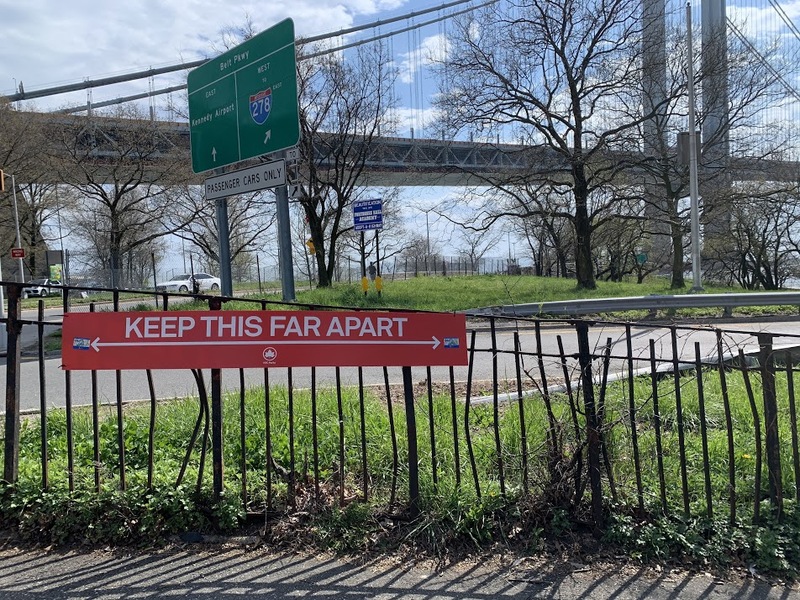
2020-04-12
Sign informing the public how far apart to stand from one another (6 ft.) near Belt Parkway entrance on Shore Road in Bay Ridge, Brooklyn.
-
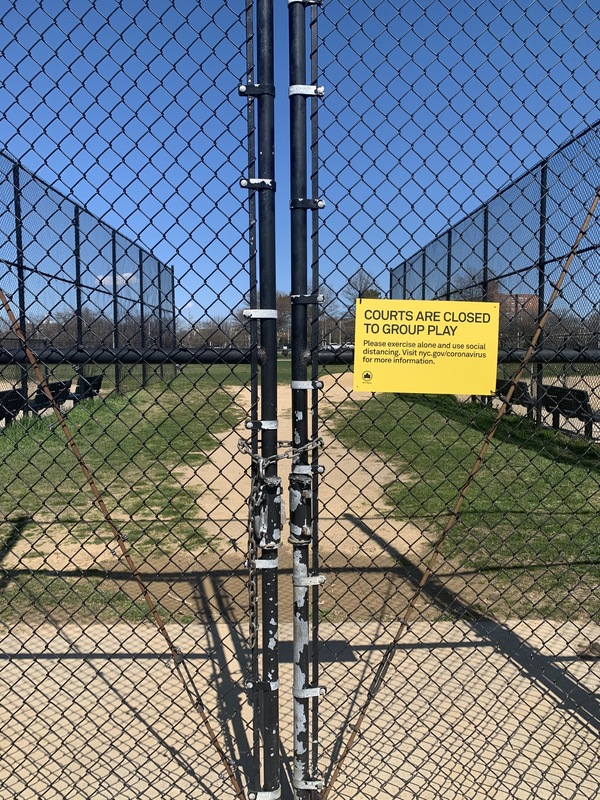
2020-04-07
Walking along Shore Parkway, I see a locked gate and sign informing the public that playing in groups is not permitted.
-

2020-04-24
Walking in Prospect Park, I see a sign informing the public of a playground closure.
-
2020-05-10
As college seniors approaching our last few months, we have all been talking about how we wanted to spend our final days together. We were aware of the reality of having more responsibility after graduation. And just like that - the time we had left vanished. It isn’t fair that our college experience didn’t have the closure it deserved. It wasn’t supposed to end like this. But among the things that seem unfair right now, who am I to complain about something so selfish and short sighted?
My college is in the Bronx, and while most people returned home to their families for quarantine, I simply switched boroughs. New York City is a warzone, over 200 people are dying everyday. One day, the death toll exceeded 800. And while I have never seen my city mourn like this, I have never seen it come together like this either. Every night at 7 pm, Maryann, two houses down from mine, stands in her driveway and plays “God Bless America” on a speaker for all the neighbors to hear. Amanda that lives down the block became a licensed nurse a few months ago. Her mother, Fran, has made a hobby of making masks out of old fabric. My sister spends hours on the phone talking to her special education students and their families about the adjustments being made. As a result of this pandemic, Dalia across the street has had an increase in patients wanting appointments because of the increase in mental health problems. When I go for my daily walk, everyday I see a new sign thanking healthcare and essential workers, signs saying things like, “Brooklyn Strong!”
Nothing brings people together like tragedy. There are differences among all these people I have mentioned and they are all being affected in different ways. However, at the end of the day, any one of us can get sick. We are all human. We have different ethnic origins, identify as different genders, practice different religions, have different mental and physical disabilities, but viruses don’t care about that. Although certain health or economic factors may make specific groups more at risk for serious illness from the virus, a virus is non-discriminatory when it comes to the presence of cognitive or physical disabilities. It will survive and debilitate any human body. We all share a common enemy. During this pandemic, so many different kinds of people are fighting for something bigger. This fight against a force imperceptible to the human eye has in fact diminished differences, brought people together to fight for change in new and influential ways, and shown the strength of the fabric of our society.
-

2020-04-06
Walking along Shore Parkway, I encounter this coronavirus graffiti.
-
2020-05-09
March 25
This time has truly been a busy and challenging one. It is worrying and stressful. I believe that the 24-hour news cycle is part of the cause for this stress. There is no escape from the virus. I used to watch a lot of sports, but now there is nothing on TV. All ESPN has become is how Covid-19 is affecting the sports world. All anyone talks about now is the virus, nothing else really is being focused on. While this is a very negative view of this whole situation, I have observed one positive myself from this whole ordeal. I have been able to spend more time with my family and this has made weathering this whole situation easier. But this does make me feel for those who are not in the same situation as me. There are many whose parents are still working outside the home because their job requires them to or to help those with the virus. To those people I offer my gratitude and wishes for their well-being.
April 15
What I have found most interesting about these times has been how hard it is to do
work. I really did not think it would be this challenging. I expected some change, but it really is much harder to concentrate and get motivated in these times. But the more I think about it the more it really makes sense as to why it is so hard to do work and focus. At Fordham I would normally go to the library for 2 or 3 hours a day and be able to focus and tune out the rest of the world and just focus on the tasks at hand. It wasn't hard to focus back then. My biggest worry was the next exam or my GPA. A pandemic wasn't on my mind always in the background. This pandemic makes it hard to tune out the world. It is all over the news and all anyone talks about, so it’s just hard to think about anything else. It is also harder to do work at home. At the library I was there for one reason, to do work and I left when I finished. It is different at home. There are distractions everywhere and it is not a place I am accustomed to doing so much work. It was a place I came to relax and take a break. This whole ordeal has really been an adjustment. But I count myself among the lucky ones. My challenges are mundane in the face of what others are facing. All I can truly say is that this is truly a crazy world we live in today. It is like a movie playing out before our eyes.
April 21
Over the last week it looks like things are starting to improve a little bit in New York. We are making progress against the virus and the curve has begun to flatten according to Governor Cuomo. We still have a long way to go though. But hopefully this trend continues, and New York will be able to go back to some sense of normalcy this summer. Not every state is like New York though. Not all states are taking the proper precautions about Covid-19 or are truly taking it seriously. New York is thinking of opening in June. Other states are considering reopening next week. This is truly concerning. All the leaders of these states seem to care about is the economy. They want to open back up as soon as possible to restart the economy. What these leaders fail to consider though is that if they reopen too early the economy would be even worse than it is now and so many more lives will be lost. But they do not seem to think about the future, just the present.
April 22
I thought I would post an update today. I have not left the house frequently since the Covid-19 outbreak started but today I did. While looking out the car window I was truly shocked at the amount of people I saw not wearing masks. There were construction workers, runners, and bikers all not wearing masks, even though the governor mandated them days ago. These individuals looked like they were coming in close proximity with others, so I was surprised they were not taking the proper precautions. While I understand those, who cannot get their hands on a mask due to supply issues, I believe that there must be some way to cover your face to protect yourself and others. A simple bandanna or even a scarf could go a long way toward protecting yourself. To me this seemed to show that some people are not taking the pandemic seriously and are
ignoring it.
May 9
Today I wanted to discuss a particular issue that I have observed during the Covid-19
crisis. This is the issue of ableism in society. I was encouraged to read more into this topic after a classmate had mentioned it a couple of weeks back. Ableism is already an issue in society today, so you may wonder if it can really get worse. It indeed has gotten worse since the Covid-19 crisis has begun. The reason ableism in has gotten worse in society, actually has to do with something called a ventilator. Many states have found themselves woefully unprepared for this crisis, lacking many key products. One of these key products is a device called a ventilator. Ventilators are important because they can provide mechanical ventilation for people whose lungs have shut down due to an injury or infection, such as Covid-19. Ventilators were in short supply towards the peak of this crisis, but the issue has mostly been solved for the time being. At the beginning of the crisis however, some state officials tried to conserve their dwindling supplies of ventilators. Some states took this effort too far though. They enacted policies that could deny individuals a ventilator based on if they have certain underlying conditions such as dementia, cystic fibrosis, or “severe” intellectual disabilities. Upon reading into these policies, I was highly disturbed. We are deciding who lives and who dies based on these policies. In a way we are judging who is more “worthy” of life. The way these policies are written makes it is clear who these policy writers are considering more “worthy” and less “worthy”. These policy writers clearly believe that disabled individuals are less “worthy” of life then the rest of mankind. By denying disabled individuals a ventilator, you are denying them life and enforcing the notion that these individuals are not “worth” keeping alive. I truly believe this is wrong in every way. These policies blatantly violate the rights of the disabled and treat them as “inferior” to the rest of society.
-

This scene happened outside my house in the early days of the pandemic. My brother noticed a was car parked outside of our house for multiple hours, and was starting to get suspicious. I thought nothing of it, until two police cars pulled up beside it. After talking for a while, 3 more police cars and an ambulance showed up. It was quite the scene. After more talking, the man in the vehicle was eventually arrested and taken away. It turns out that the man inside was certain he had the Covid virus, and did not want to go home to his family. He had nowhere else to go, and it was a cold night, so he tried to park his car on our street and sleep there. It seemed like a valiant thing to do in my opinion. But, for whatever reason (there was probably more details we were not told), he was arrested, and his car was towed. It made me think: should he have been allowed to just sleep there? Was he doing anything wrong? I can't even imagine being too scared of yourself harming someone that you can't even go home. It was certainly a night to remember.
-
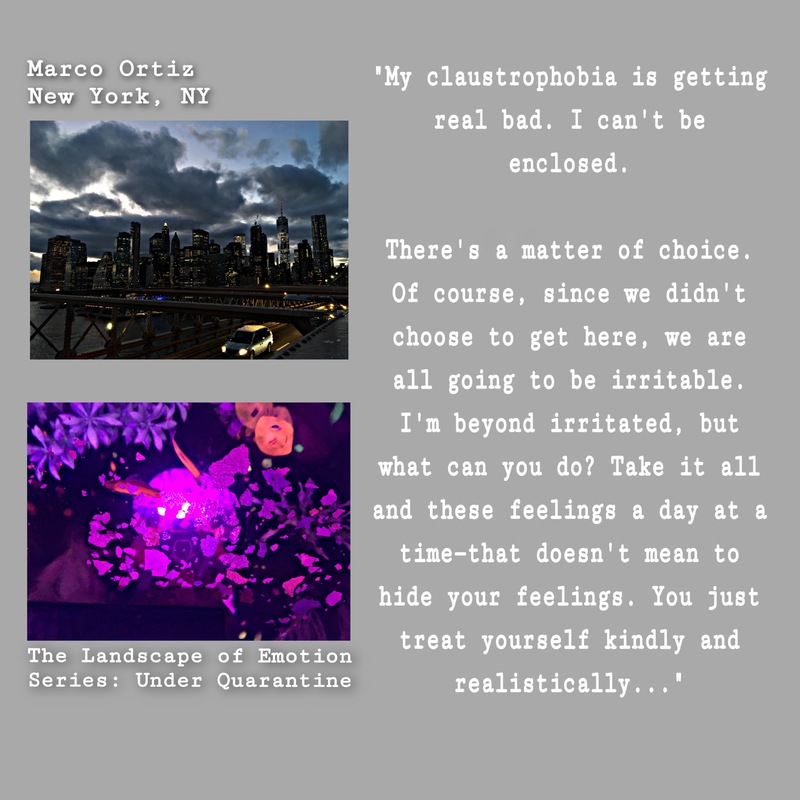
2020-05-10
The Landscape of Emotion Series: Under Quarantine is a series illustrating the diverse experiences of mental health and feelings throughout quarantine.Marco Ortiz, my nephew expresses the physical fear, and argues that we must accept certain feelings during these troubling times.
-
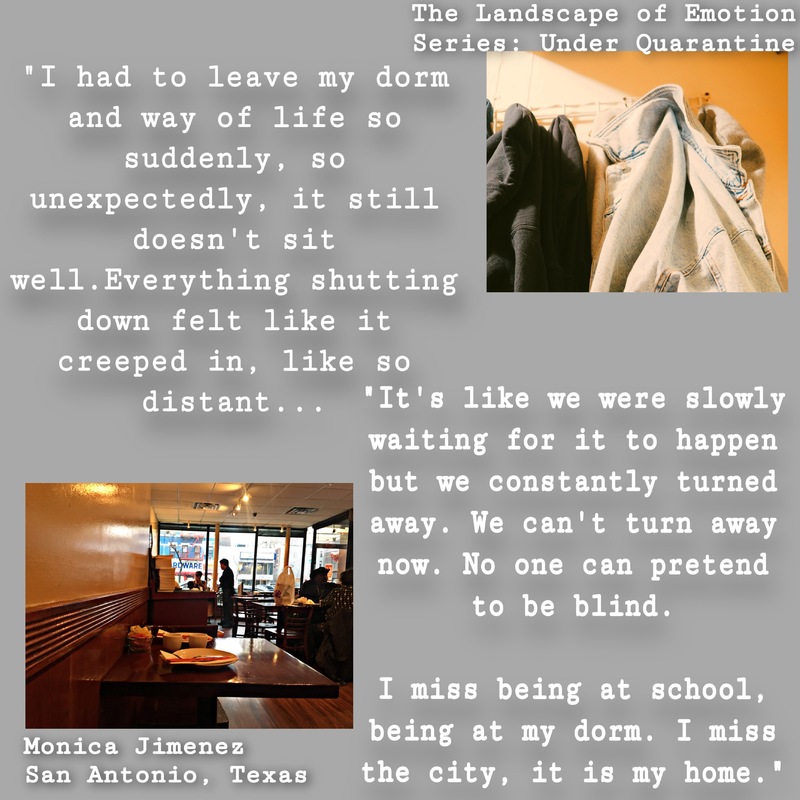
2020-05-10
The Landscape of Emotion Series: Under Quarantine is a series illustrating the diverse experiences of mental health and feelings throughout quarantine. Monica Jimenez describes how her way of life was changed immediately after being told to return home.
-

05/10/2020
The Landscape of Emotion Series: Under Quarantine is a series illustrating the diverse experiences of mental health and feelings throughout quarantine. Marlen Guerrero, my best discusses how staying inside can lead to isolation but also the acceptance required to take care of yourself.
-
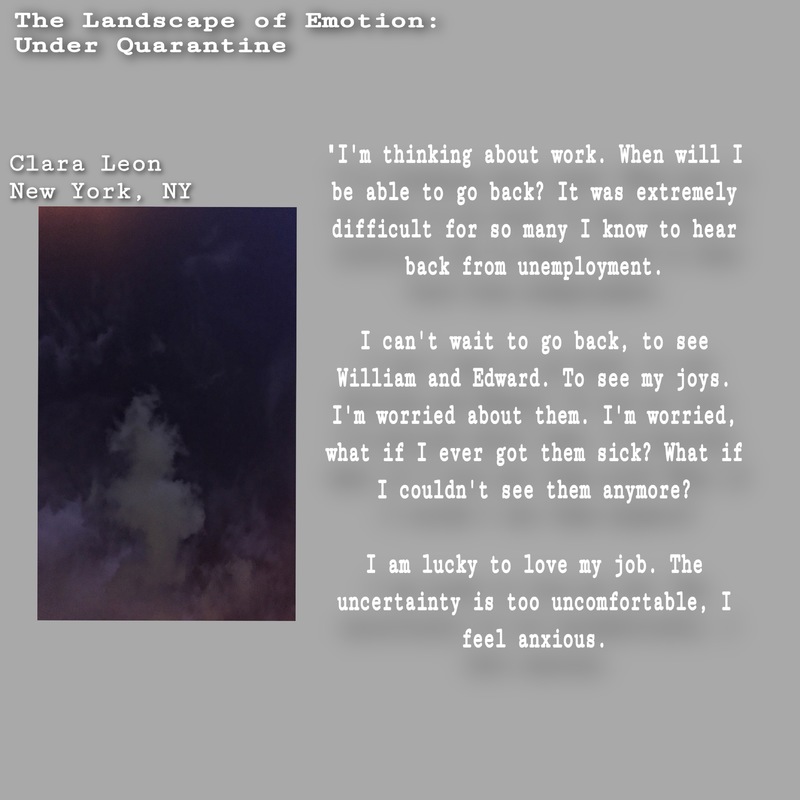
2020-05-10
The Landscape of Emotion Series: Under Quarantine is a series illustrating the diverse experiences of mental health and feelings throughout quarantine. Clara Leon, my mother, focuses on unemployment and the love she has and misses for her job. Note: Edward and William are the children she takes care of.
-
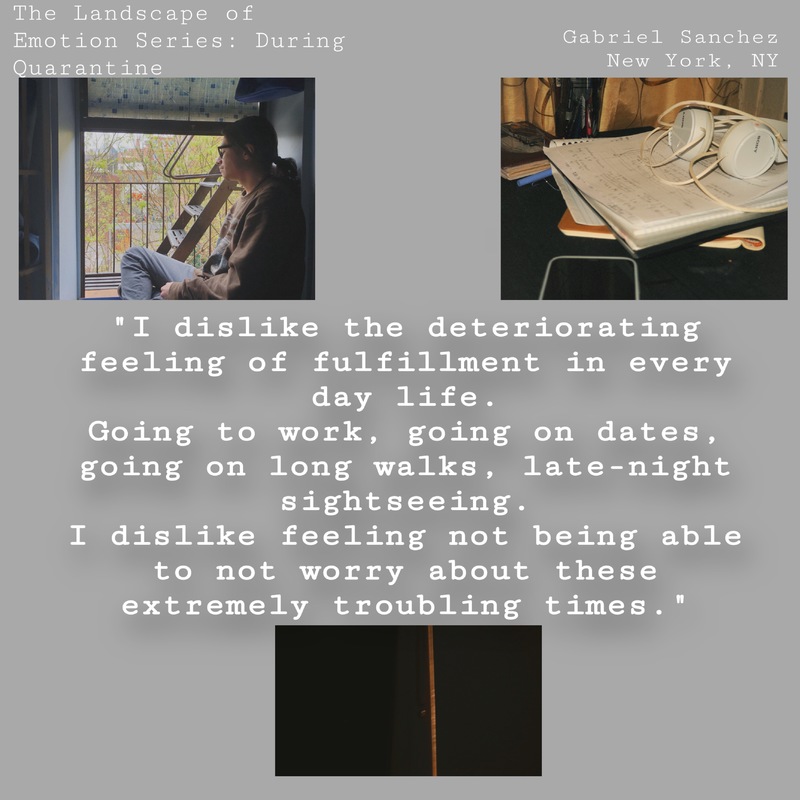
2020-05-10
The Landscape of Emotion Series: Under Quarantine is a series illustrating the diverse experiences of mental health and feelings throughout quarantine. Gabriel Sanchez, my significant other, American Eagle worker, and incredible individual explains what he dislikes the most about quarantine. He portrays that it is completely acceptable and human to dislike what is happening
-
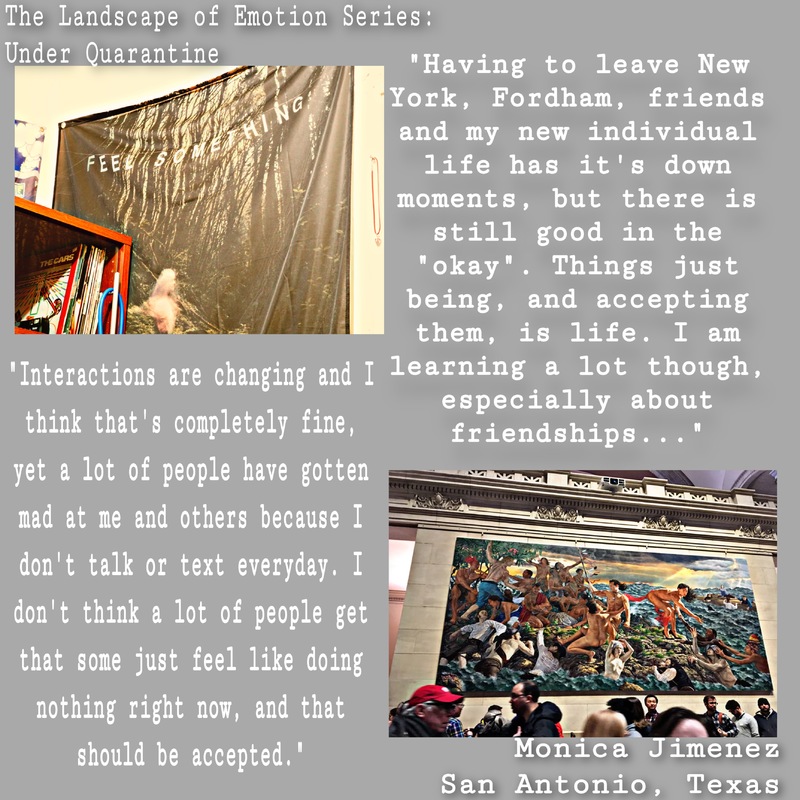
2020-05-10
The Landscape of Emotion Series: Under Quarantine is a series illustrating the diverse experiences of mental health and feelings throughout quarantine. Monica Jimenez, a junior at Fordham University, expresses how friendships can change due to social changes that the quarantine brings. She interestingly focuses on the acceptance that we should have.
*A graphic image including quotes from individuals I interviewed and my own images.
-
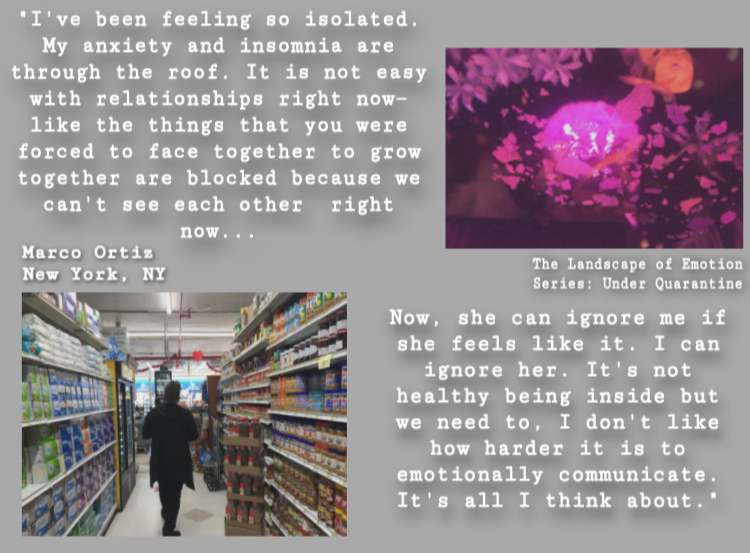
2020-05-10
The Landscape of Emotion Series: Under Quarantine is a series illustrating the diverse experiences of mental health and feelings throughout quarantine. My nephew, Marco Ortiz, focuses on the isolation and lack of communication he feels quarantine brought to his relationships.
-

2020-05-10
The Landscape of Emotion Series: Under Quarantine is a series illustrating the diverse experiences of mental health and feelings throughout quarantine. Michelle Lerner, a family friend, compares her current emotions and experience to previous crises and personal accidents.
-
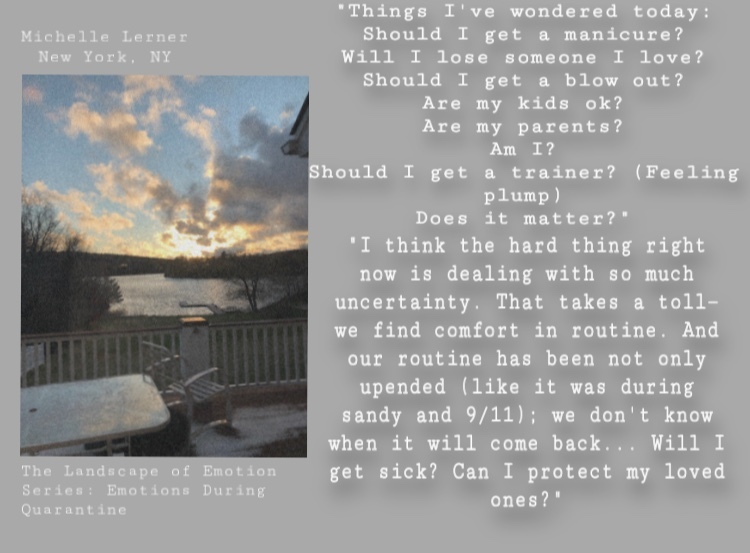
2020-05-10
The Landscape of Emotion Series: Under Quarantine is a series illustrating the diverse experiences of mental health and feelings throughout quarantine. Michelle Lerner is a family friend, my mother's boss, and an extraordinary person. Here, she demonstrates how thoughts have been since having to stay again, she only has questions.
-
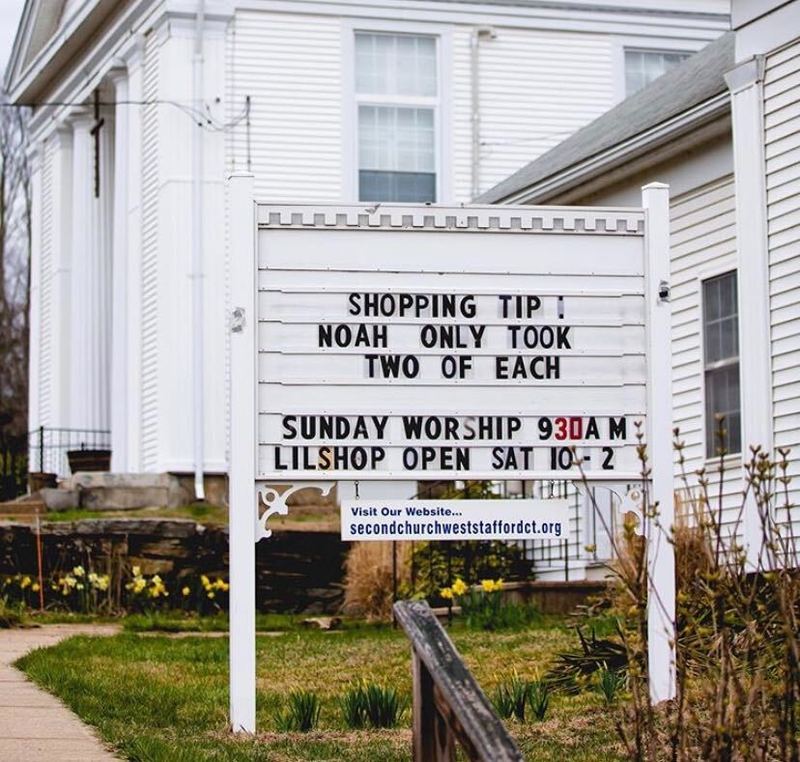
2020-04-18
"Signs From Around: #14, Strafford, CT" is part of a series exploring the signage surrounding COVID-19 from different parts of the world.
Pandemic shopping advice rooted in religion
#FordhamUniversity #VART3030 #SignsFromAroundSeries
Date
-
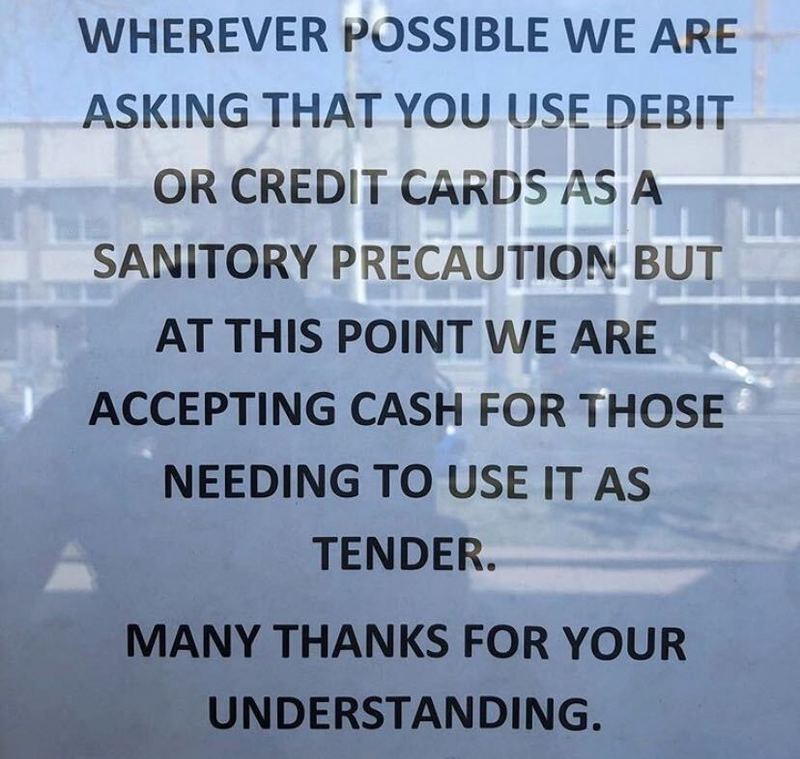
2020-03-24
"Signs From Around: #13, Vancouver, Canada" is part of a series exploring the signage surrounding COVID-19 from different parts of the world.
Businesses try to prevent the virus spreading by not accepting paper currency transferred hand to hand.
-
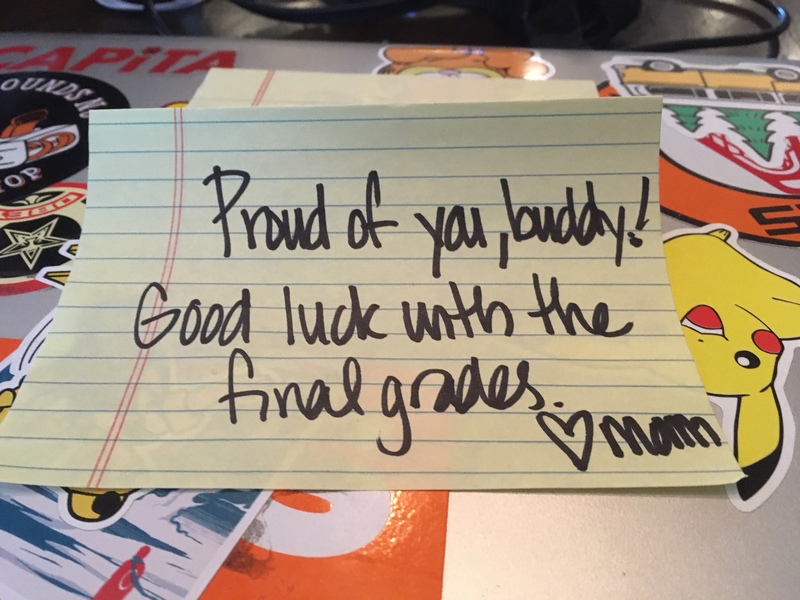
2020-05-01
The COVID-19 virus disrupts life, particularly our relationships with those we love. But, relationships are flexible and adapt to circumstance. My brother's economics professor has not posted his final grade, yet. Remote learning creates many opportunities for students to violate the academic integrity policies of their schools, and my brother's class was no exception. Due to several perceived violations on the final exam, his professor delayed the posting of all final grades. In other words, although he did not cheat, he had to sweat it out with everyone else. My mother knew he was worried and wanted to leave him with some encouragement in the morning, so she left this note on his laptop before she left for work. We don't see her in the morning anymore, but my mom is always there for us.
#FordhamUniversity #VART3030
-

2020-05-08
A sunny spring day and a wider range of people than usual were walking in this public area, self consciously enjoying the air and exercise, but keeping physical distance.
-
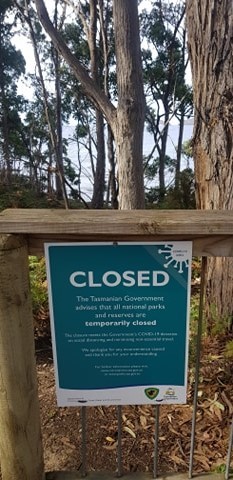
2020-03-28
This is a local beach in southern Tasmania that was closed by the Parks and Wildlife Service (PWS) in an effort to curb non-essential travel and enforce social distancing restrictions. The image and the actions taken by the PWS indicates the extent to which COVID-19 impacted various facets of society and everyday life.
-
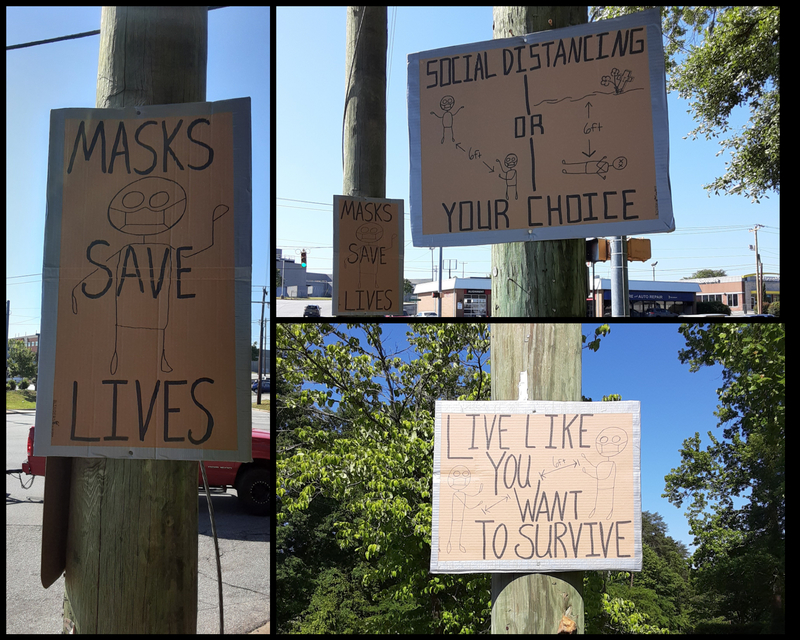
2020-05-09
A selection of images from around the Greenville SC area all by the street artist BLINDERS. They address Coronavirus awareness, public safety, masks wearing, social distancing and government distrust. All posters are signed BLINDERS 5/20 YOTP (Year Of The Plague)
-
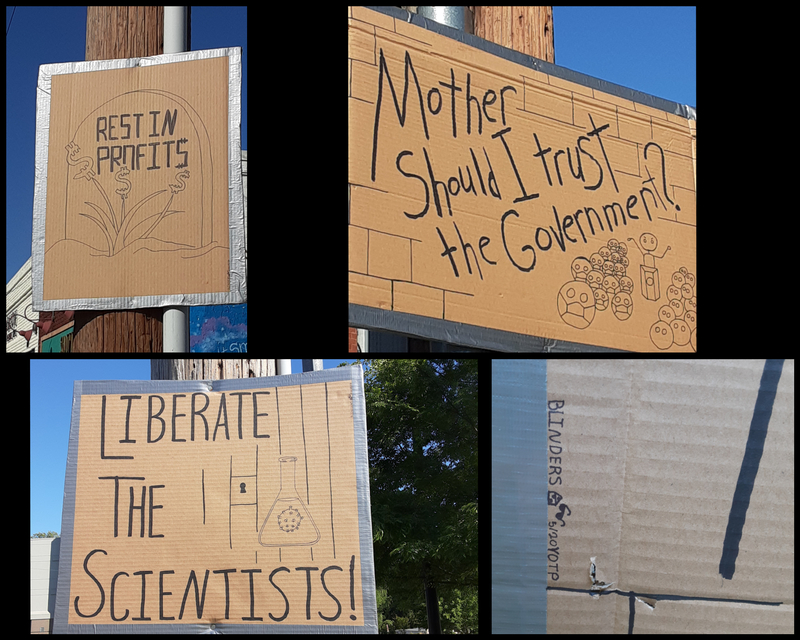
2020-05-10
A selection of images from around the Greenville SC area all by the street artist BLINDERS. They address Coronavirus awareness, public safety, masks wearing, social distancing and government distrust. All posters are signed BLINDERS 5/20 YOTP (Year Of The Plague)
-

2020-04-11
Image of shoppers forming new social distancing line at local Shaws market.
-
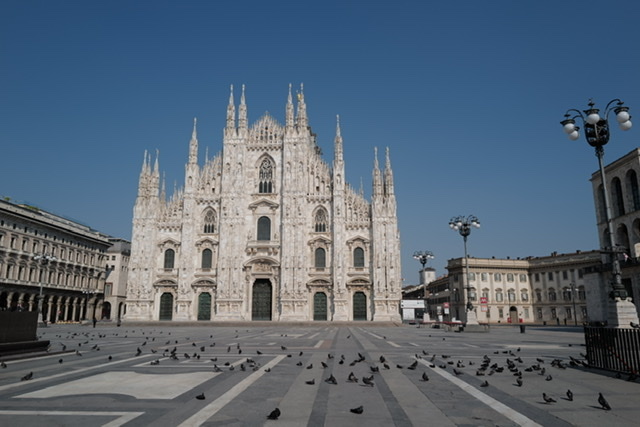
2020-04-23
deserted Duomo place usually overcrowded
-
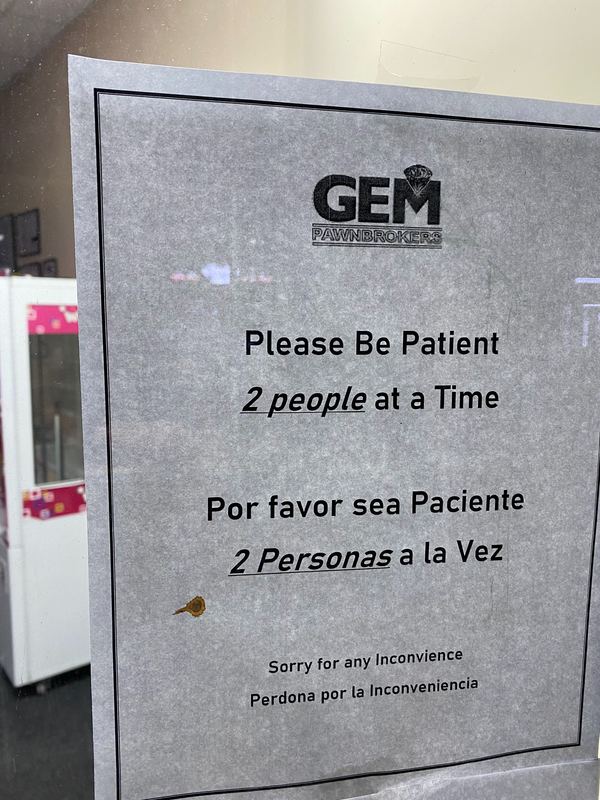
2020-05-27
"Signs From Around: #12, Washington Heights, NY" is part of a series exploring the signage surrounding COVID-19 from different parts of the world.
Businesses make adjustments in hopes of staying open.
 2021-04-20
2021-04-20 2020-04-08T18:22
2020-04-08T18:22 2020-08-05
2020-08-05 2020-04-19
2020-04-19 2020-04-19
2020-04-19 2020-04-19
2020-04-19 2020-04-19
2020-04-19 2020-07
2020-07 2020-07-06
2020-07-06 2020-04-30
2020-04-30 2020-02-02
2020-02-02 2020-03-05
2020-03-05 2020-04-18
2020-04-18 2020-04-04
2020-04-04
 2020-04-25
2020-04-25 2020-03-19
2020-03-19 2020-04-05
2020-04-05 2020-04-17
2020-04-17 2020-04-24
2020-04-24 2020-04-29
2020-04-29 2020-04-17
2020-04-17 2020-04-29
2020-04-29 2020-04-12
2020-04-12 2020-04-07
2020-04-07 2020-04-24
2020-04-24 2020-04-06
2020-04-06
 2020-05-10
2020-05-10 2020-05-10
2020-05-10 05/10/2020
05/10/2020 2020-05-10
2020-05-10 2020-05-10
2020-05-10 2020-05-10
2020-05-10 2020-05-10
2020-05-10 2020-05-10
2020-05-10 2020-05-10
2020-05-10 2020-04-18
2020-04-18 2020-03-24
2020-03-24 2020-05-01
2020-05-01 2020-05-08
2020-05-08 2020-03-28
2020-03-28 2020-05-09
2020-05-09 2020-05-10
2020-05-10 2020-04-11
2020-04-11 2020-04-23
2020-04-23 2020-05-27
2020-05-27